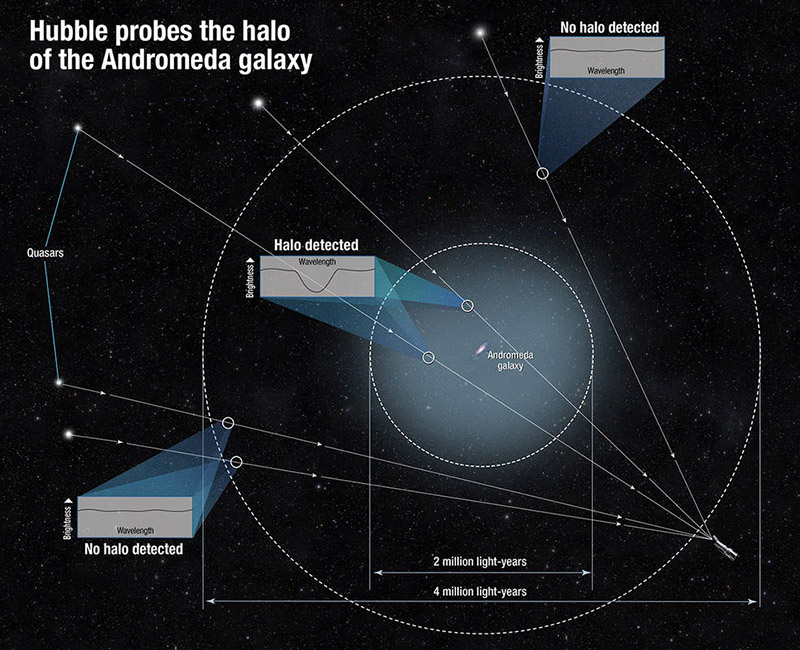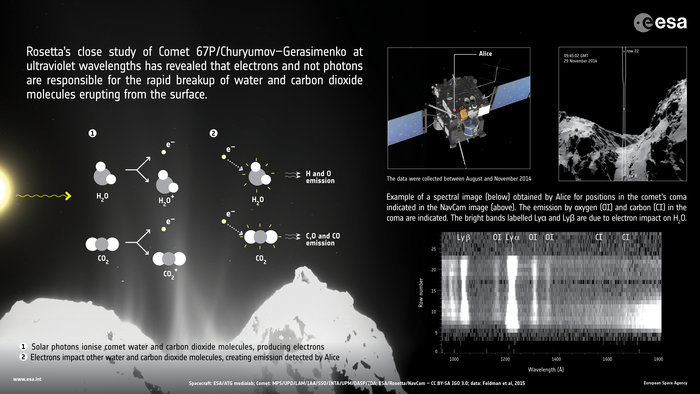Galactic Jets
For the first time, a collision of material within a black hole jet was observed. Black holes have event horizons, a proverbial point of no return. Once something crosses that event horizon, it will never escape. However, a particle with enough energy can get arbitrarily close to the event horizon and still get out. Due to the dynamics of black holes (most notably spin) those high energy particles form jets focused along the black hole's axis.Galactic jets are not very well understood due to their highly relativistic nature. In layman's terms, things moving that freakin fast are hard to see clearly. What was observed for the first time in the series of pictures from Hubble taken over the span of 20 years (animated in the video below) was a collision of black hole jet material with other black hole jet material.
This in itself is a wonderful observation, but more important is that it gives us a target of observation for further study of this phenomenon. We can now watch the evolution of these jets and see how the energy is dissipated, hopefully across the entire spectrum.
Gassy Andromeda
The halo of gas surrounding Andromeda, our nearest galactic neighbor, was probed much in the same way the Milky Way's jets were probed as reported in the February, 2015 edition of All Space Considered. Background quasars were used to see how far out the gassy halo extended (see image below for further explanation) and it turned out to be much larger than anticipated. In previous studies of this sort looking at halos around other galaxies, only one quasar could be used due to the distance of the galaxy and rather small portion of the sky covered as seen from Earth. Because Andromeda is so close, it appears about 6 times the diameter of the moon from Earth. This halo would cover a gargantuan 100 times the diameter of the moon in the sky. That's about half the distance from the Milky Way to Andromeda. If the Milky Way has a similar halo, it could be that the galaxies are already merging on the fringes, long before the main parts of the galaxies merge, roughly 4 billion years from now.
Dark Globular Clusters
Globular clusters with much higher mass than predicted have been found in nearby elliptical galaxy Centaurus A. This observation was made comparing the motions of over a hundred of Centaurus A's globular clusters and looking at the motions of the stars and the clusters themselves around the galaxy. When comparing the masses of the clusters from that data to the mass predicted by surveying the observable stars in the cluster, it became apparent that much of the mass is invisible. For now, it's not clear where the mass comes from. The leading candidate is dark matter. For reasons beyond my understanding, it is generally thought that globular clusters such as M13, depicted below, do not contain very much dark matter. If the clusters do indeed end up harboring dark matter, it would be a new classification of astronomical object.
Supernovae
It's starting to look like there are at least two different ways for Type 1a supernova to occur. In most popular science media I've seen, the "single-degenerate" model is shown. This is where a white dwarf sucks material off of a companion star until it hits critical mass, at which point the Type 1a supernova happens. There is also the "double-degenerate" model in which two white dwarfs merge, collectively going over the critical mass. Between two different papers published in May, evidence for both types was seen. In one paper, a supernova exhibited a spike in ultraviolet radiation, thought to be generated by the supernova slamming into the companion star. In the picture below, the brown region represents the supernova. It is shown as it engulfs the companion star, shown in white and blue.
In the other paper studying type 1a supernovae, three were examined that did not exhibit this spike. This would seem to indicate these supernovae were a result of the double-degenerate model. If the term "degenerate" confuses you, it merely refers to the number of white dwarfs involved in the supernova. White dwarfs are "degenerate" in the sense that they have stopped fusing material.
The reason cosmologists care so much about Type 1a supernova is they are a key component to the body of evidence for dark energy, that which is responsible for the accelerating expansion of the universe. The more we understand Type 1a supernovae, the more we can say about what we've seen about them at all cosmic distances, from within the Milky Way to the edge of the observable universe.
In the other paper studying type 1a supernovae, three were examined that did not exhibit this spike. This would seem to indicate these supernovae were a result of the double-degenerate model. If the term "degenerate" confuses you, it merely refers to the number of white dwarfs involved in the supernova. White dwarfs are "degenerate" in the sense that they have stopped fusing material.
The reason cosmologists care so much about Type 1a supernova is they are a key component to the body of evidence for dark energy, that which is responsible for the accelerating expansion of the universe. The more we understand Type 1a supernovae, the more we can say about what we've seen about them at all cosmic distances, from within the Milky Way to the edge of the observable universe.






